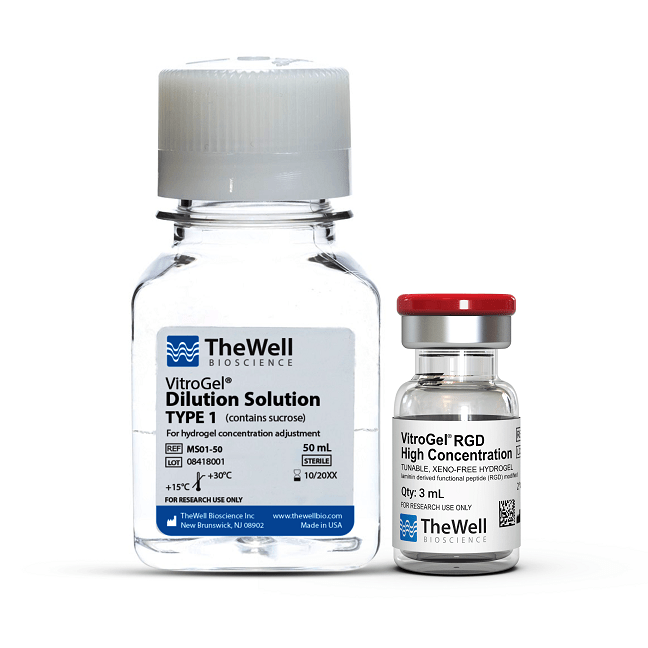Research Highlights
The Sweet Spot for Liver Cell Culture

Institutions:
National Institute for Nutrition and Health, China
Team:
Wang, J.B., Qin, W., Yang, Z., Ma, Y., Wang, L.Y., Zhou, Q., Gong, Z.L., Huo, J.S., and Chen, C.
Disease Model:
Liver Disease
Hydrogel:
VitroGel® RGD
A rigorous statistical analysis of 3D cell culture conditions allowed researchers to fine-tune the optimal dilution, time, and starting cell concentration values for liver cells grown in the VitroGel 3D-RDG hydrogel matrix.
Three-dimensional cell culturing has proven successful in providing an environment in which biological phenomena can be observed that emulates how they would proceed in a truly living organism. Culturing of liver cells is a great example of this. There are many 3D cell culture platforms that have been tried for liver cells to study liver development and to create a model system for the analysis and treatment of liver diseases. One of these is TheWell Biosciences’ VitroGel® hydrogel matrices, including VitroGel®3D and VitroGel®3D-RGD. VitroGel is a readily available, xeno-free, highly adjustable, and adaptable hydrogel system that simulates the endogenous physiological microenvironment for in vitro culture of various cell types, including hepatic cells.
In this study, a group of cell biologists from the China Centers for Disease Control fine-tuned the VitroGel 3D-RGD hydrogel culturing system for HepG2 cells, which are human hepatoma cells that are most commonly used in drug metabolism and hepatotoxicity studies. The goal was to optimize the culturing conditions so that future cancer and toxicity studies could be done in the most reliable fashion.
The authors added HepG2 cells to VitroGel RGD hydrogel after it had been diluted with VitroGel Dilution Solution at different ratios. The 3D cell culture was carried out in the wells of a 96-well plate at 37 °C in an incubator containing 5% CO2 for several days. The cell culture medial was exchanged every day by removing and replacing half the volume. The efficacies of the various dilution factors and growth times were calculated by a response surface methodology (RSM) tool. The RSM considered various factors, such as cell viability, to pinpoint the optimal culture conditions, one factor at a time.
First, the researchers examined cell growth over time and decided on the best hydrogel dilution factor. A range of ratios from 1:1 to 1:3 was determined to be the optimum range of the hydrogel dilution degree. Then the concentration of inoculated cells was found to be most efficient at 1–5 x 105 cells per milliliter, during a 2–6-day incubation period (using the aforementioned dilution ratio). Interestingly, the authors compared the 3D growth of cells to that of cells grown in a traditional 2D culture and found that after only 5 days the 2D culture was nearly dead; by contrast, the 3D culture could be viable for up to 11 days.
A full statistical analysis using the RSM tool zeroed in on the single most optimized parameter set for growth conditions in VitroGel 3D-RGD hydrogel for HepG2 cells. This analysis determined that 4.44 x 105 cells/mL, grown for 4.86 days, and with a dilution factor of 1:1.23 gave the greatest OD reading of cultured cells. Under these conditions, a range of physiological traits could be measured with great precision. The results of this study can provide an excellent starting point for the optimal 3D cell culturing of liver cells.
Read the publication:
Related Products:


